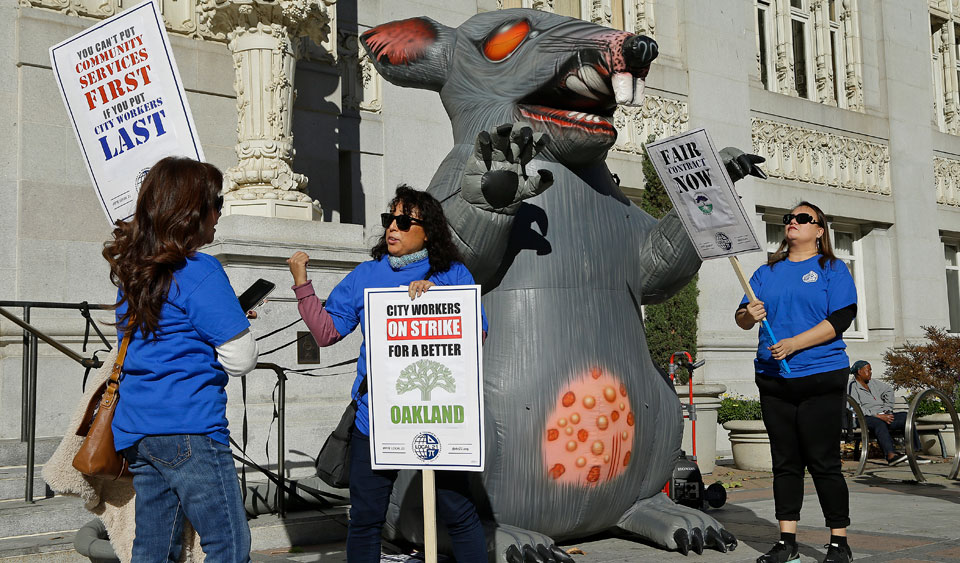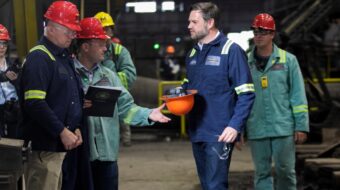
BROOKLYN, N.Y. (PAI)—A federal judge in Brooklyn turned labor’s famous Scabby The Rat loose from a trap—really a ban—the Trump-named National Labor Relations Board majority set.
Instead, U.S. District Court Judge Nicholas Garaufis said on July 1 that the Constitution’s First Amendment right of free speech protects the rat—and a big cockroach, too.
The case got started when Laborers Local 79 picketed a ShopRite at a Staten Island strip mall for union-busting there and brought two big rats, each known throughout the movement as a symbol of someone who crosses picket lines or otherwise scabs, to the scene. The slightly smaller cockroach, symbolism similar, came along.
NLRB’s Brooklyn regional office, following—even if only by inference—guidance from the Trump-named NLRB majority, sued to ban the rat, setting the trap. A check of board records showed this wasn’t the first time the Trump majority on the agency tried to ban the rat. It lost at least once.
Garaufis sprang the rat loose from the NLRB’s trap. And he cited the same constitutional provision, the free speech clause, which right-wingers use against workers and unions, most notably in last year’s U.S. Supreme Court Janus decision.
Janus made every public worker in the U.S. a potential “free rider” able to use union services without paying one red cent for them. Forcing payments for contract negotiations and enforcement, the court’s five-man GOP-named majority said then, violates dissenting workers’ free speech rights. Trapping the rat, Garaufis said, violates union workers’ free speech rights.
“As a threshold matter, the court notes Local 79’s peaceful use of stationary, inflatable rats and a cockroach to publicize a labor protest is protected by the First Amendment,” Garaufis wrote.
Appealing his ruling “would raise serious constitutional concerns” the judge warned the board.
NLRB General Counsel Peter Robb, a Trumpite, has been leading the charge to try to ban the rat for interfering with business. That’s no surprise. Robb first came to right-wing notice when, as a young Justice Department attorney, he wrote the legal justification for Ronald Reagan’s firing of the Air Traffic Controllers (PATCO) in 1981. The NLRB had no immediate comment on the ruling.










